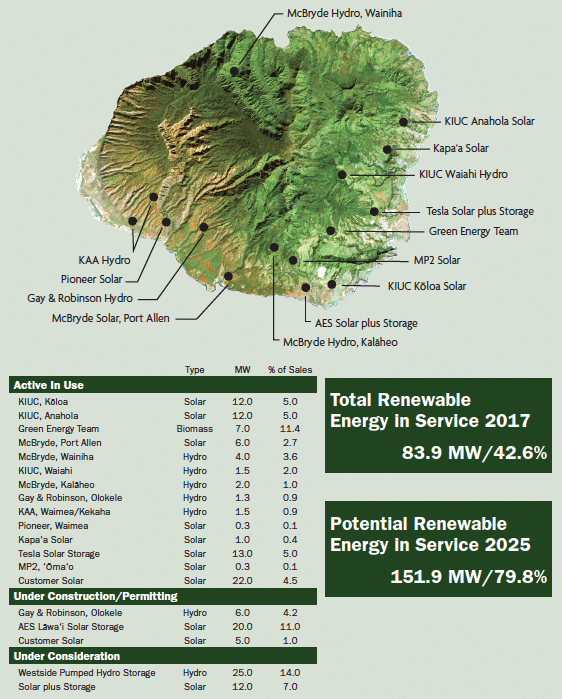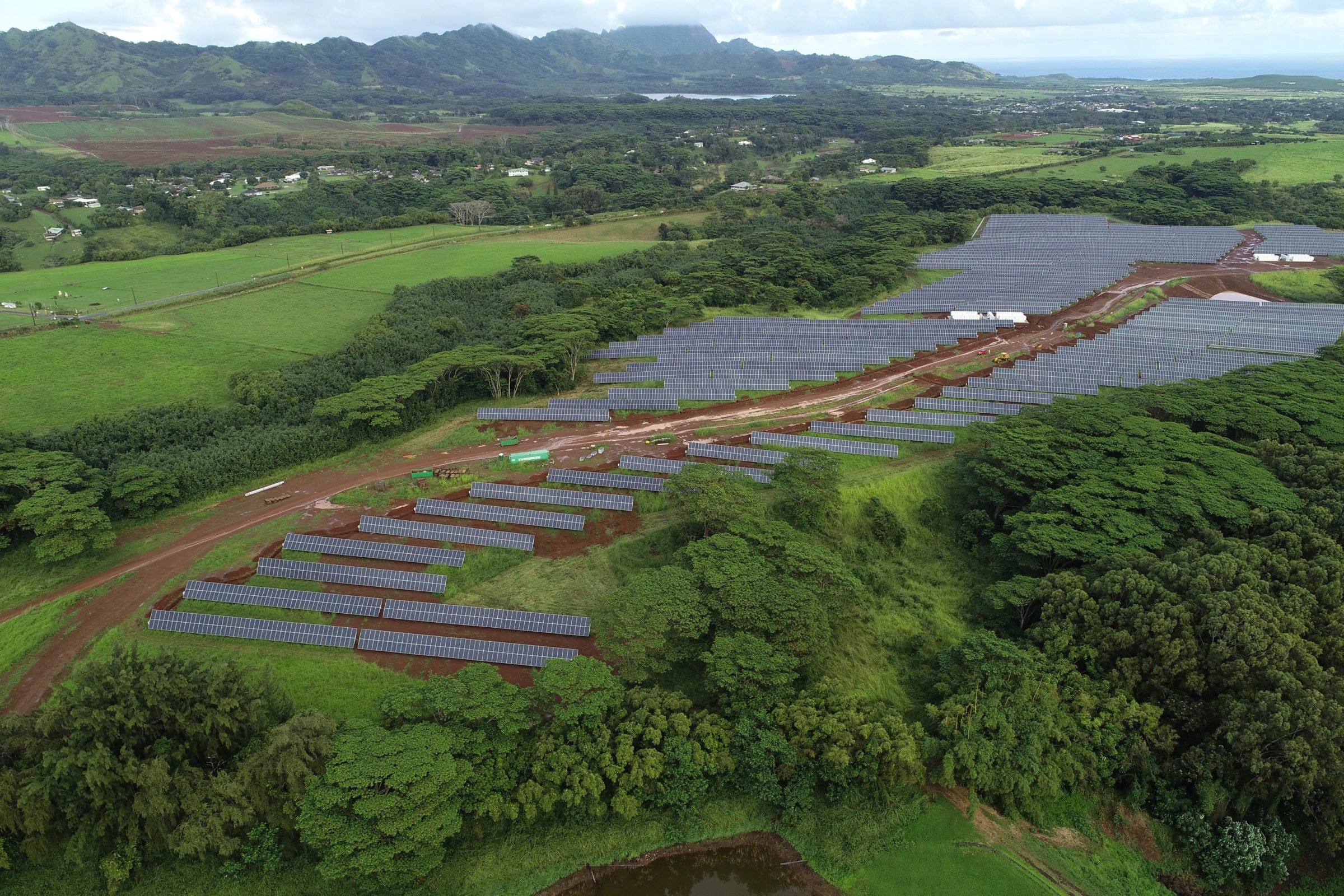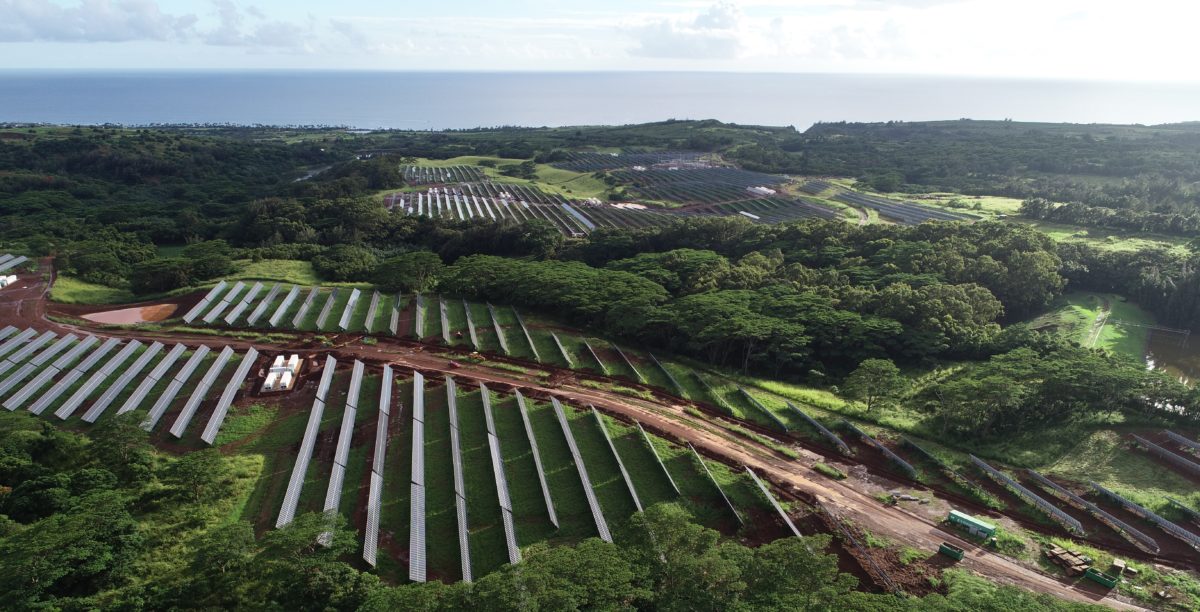If there is one refrain that we have heard more than any other from those who cast doubt on the ability of renewable energy to supply the demands of our civilization, it is that the sun doesn’t shine and the wind doesn’t blow all the time.
As it turns out, they don’t have to. Because with batteries, photovoltaics can supply electricity after sundown. And this is not theory; it is being done.
Today AES Corporation and Kaua’i island Utility Cooperative (KIUC) officially inaugurated what is being described as the world’s largest solar plus storage “peaker” – meaning that it will meet peak demand typically served by the use of natural gas-fired power plants. In the case of Kaua’i and many other grids, the peak is in the evening – and the evening need is even more significant given the large portion of daytime demand met by PV.
The Lāwa’i Solar and Energy Storage project features 28 MWdc of solar paired with a 20 MW lithium-ion battery system with a five-hour rating. The system is projected to meet 11% of the electricity demand of the island’s 67,000 residents and thousands of tourists each year, and prevent the use of 3.7 million gallons of diesel fuel annually.
The plant can also “black-start” the grid after a system-wide outage or natural disaster, as well as dispatching solar and battery power to meet spikes in demand. And it can do all of this while still supplying power at less than 11 cents per kilowatt-hour.
34% solar on Kaua’i
The Lāwa’i plant will push the annual portion of demand met by solar on Kaua’i to 34%, which is by far the highest portion anywhere known to pv magazine USA for a region of this size and population.
 With the island’s biomass and hydro plants, this year Kaua’i is expected to meet more than half of its demand with renewables, a major milepost towards the 100% of electricity that the entire Hawiian island chain has mandated for 2045. But Kaua’i may be there much sooner, as KIUC is expecting to reach 80% renewables in 2025.
With the island’s biomass and hydro plants, this year Kaua’i is expected to meet more than half of its demand with renewables, a major milepost towards the 100% of electricity that the entire Hawiian island chain has mandated for 2045. But Kaua’i may be there much sooner, as KIUC is expecting to reach 80% renewables in 2025.
And as we have explored in our previous coverage, Kaua’i is a particularly difficult place to do this, given that the island’s relatively small size, lack of interconnections, and prohibition on building wind turbines.
Details of the system
Kaua’i represents other unique challenges for solar projects. Due to the steep terrain of the site, conractor Exyte Energy installed “2-up” single-axis trackers, with the solar panels elevated 7.5 feet above the ground. This is more than twice the height of standard trackers, and also allows for elevated wiring and free movement to maintain the plant from underneath.
The plant features SunPower PV modules, and Samsung SDI batteries. Here’s a glorious photo, that can be seen in full size.

This content is protected by copyright and may not be reused. If you want to cooperate with us and would like to reuse some of our content, please contact: editors@pv-magazine.com.









Great to see solar plus storage gaining recognition as a cleaner, cheaper alternative to fossil fuels. We truly have the technology to make the transition to a sustainable, secure and resilient future.